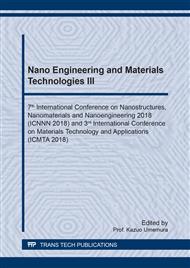p.185
p.190
p.195
p.200
p.207
p.212
p.217
p.222
p.228
Confined Effect of Spiral Steel on the Bond Strength of Tension Lap Splice in SCC Beam
Abstract:
This study investigates the bond strength of tension lap splice of self-compacted concrete (SCC) beam with various confining reinforcement. Four beam specimens were cast with SCC for test, in which three kinds of confined conditions were selected. Results indicate that the spiral steel at the tension lap splice presents similar confined effect as that of the transverse stirrups with same pitch. The beam reinforced with moderate stirrups in addition to the spiral steel may increase the confining effect. SCC beam should arrange proper amount of stirrups at the region of tension lap splice to preserve the flexural ductility of the beam.
Info:
Periodical:
Pages:
222-227
Citation:
Online since:
March 2019
Authors:
Keywords:
Price:
Сopyright:
© 2019 Trans Tech Publications Ltd. All Rights Reserved
Share:
Citation:


